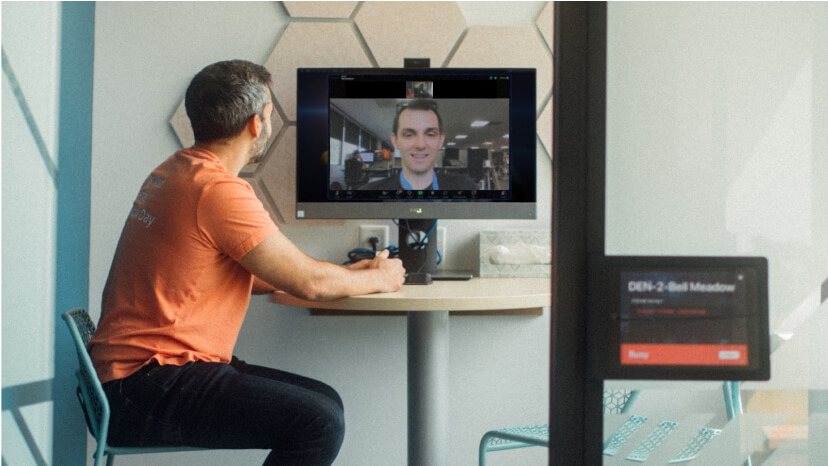At Enterprise Connect 2019 in March, Eric Krapf, general manager and program co-chair for Enterprise Connect, said there are an estimated 32.5 million huddle rooms around the globe. The vast majority of these have no technology, save for maybe a phone or ethernet cable. With the trend of open floor plans in offices, employees need more private spaces to collaborate. Companies right now have about one room for every 10 to 25 office employees, Frost and Sullivan sees this going to one room for every five office employees. While less than 14% of huddle rooms are video-enabled now, the analyst firm expects this to increase to 77% by 2023. For years Zoom Rooms have been the go-to for companies to outfit their huddle and conference rooms. To make this even easier, we are working with a group of carefully selected partners to enable frictionless procurement and deployment of Zoom Rooms. We have conference room kits with AVer, Crestron, DTEN, Logitech, HP, and Poly. These single-vendor solutions provide the hardware, and we provide the software, in some cases preloaded. Said differently, we are software engineers at our core, and our hardware partners are embedding our great software into their great hardware so that our clients have an amazing experience! The single-vendor approach is great for huddle rooms, and as you move into more complex spaces (training rooms, rooms with special features like glass walls, etc.), you may need an open hardware ecosystem. Only an open software provider like Zoom makes this possible, and our professional services team works with AV integrators to make this easy for our customers.
![The 14 best Notion alternatives for documentation [2025] The 14 best Notion alternatives for documentation [2025]](https://media.zoom.com/images/assets/notion-alternatives-hero.webp/Zz1hZjI2ZGIyODQ4ODIxMWYwYTliMzRlOWJiN2JlNTQ5NQ==?t=20250709010353)


![The 10 best webinar platforms for businesses [2025] The 10 best webinar platforms for businesses [2025]](https://media.zoom.com/images/assets/webinar-platforms-hero.webp/Zz1hYjUxZTJhNDFlYWMxMWYwODc3ODVlMzlmOTMzYTZkNg==?t=20250709010353)










